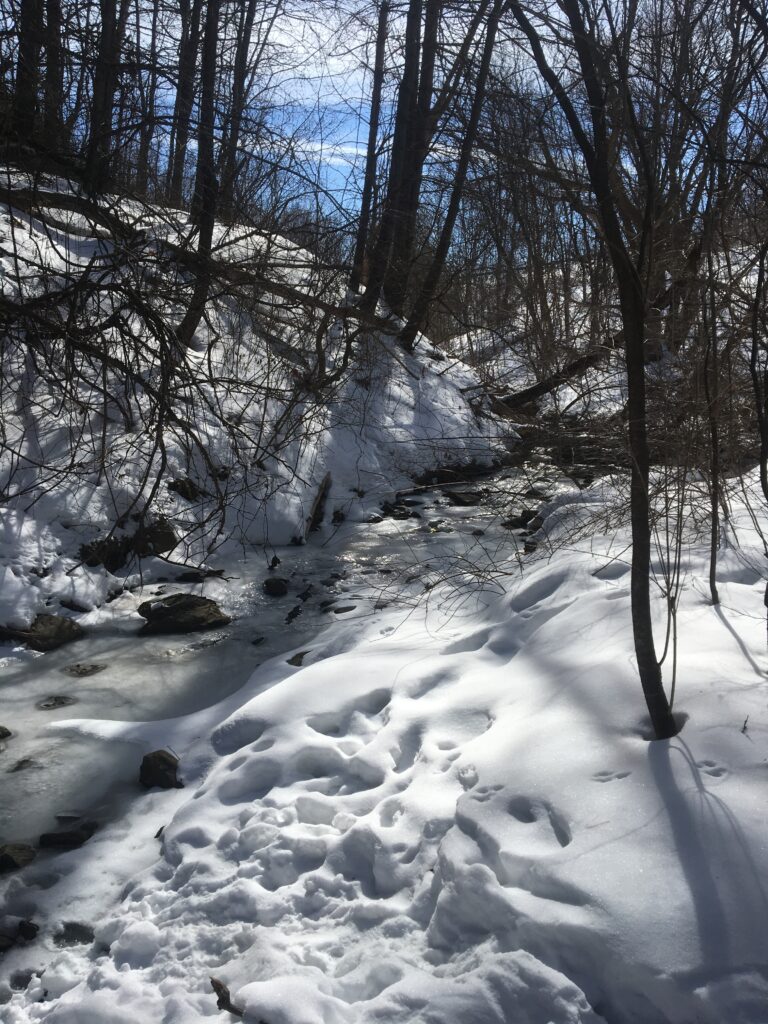My spot’s natural community proved difficult to identify, since the forest changes a lot depending on the bank, and how far from the brook the trees are growing. Conifers like eastern hemlock and eastern white pine grow up the slope of the southeast bank, away from the brook, while a few deciduous trees such as paper birch, American beech, and basswood are scattered closer to the water. The northwest side’s forest is comprised almost entirely of hardwoods including yellow birch, sugar maple, boxelder, and green ash. Taking this variability into account, I decided that the best fit for my phenology spot is Northern Hardwood Forest. It has the characteristic beech, yellow birch, and sugar maple of that natural community, as well as the cool, moist, loamy soil on a gentle to moderately steep slope. Finally, although the herb layer isn’t visible at this time of year, I know from previous visits that it matches the Northern Hardwood Forest’s description of being neither lush nor sparse.

Upon returning to my phenology spot I was delighted to discover a deer path that started on the far bank, crossed the brook, and continued on the other side before disappearing into the forest.

The recent snowfall has accumulated so that it is at least a foot deep in most places, and the cold temperatures have caused a layer of ice to form over the brook. The water still flows beneath it, and there are a few open patches in the ice, but it is for the most part inaccessible.
